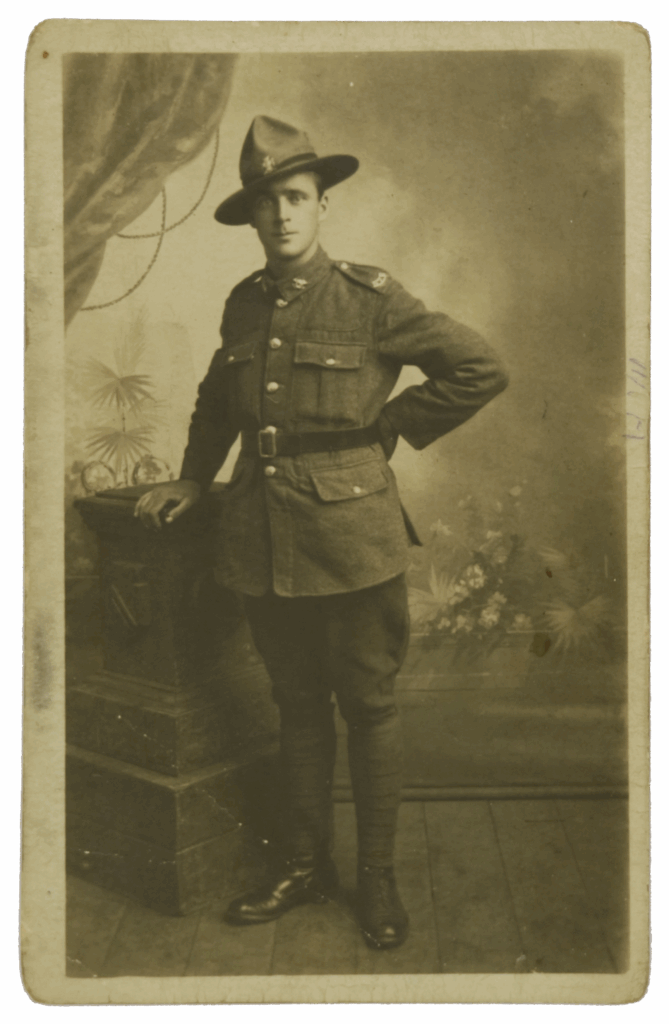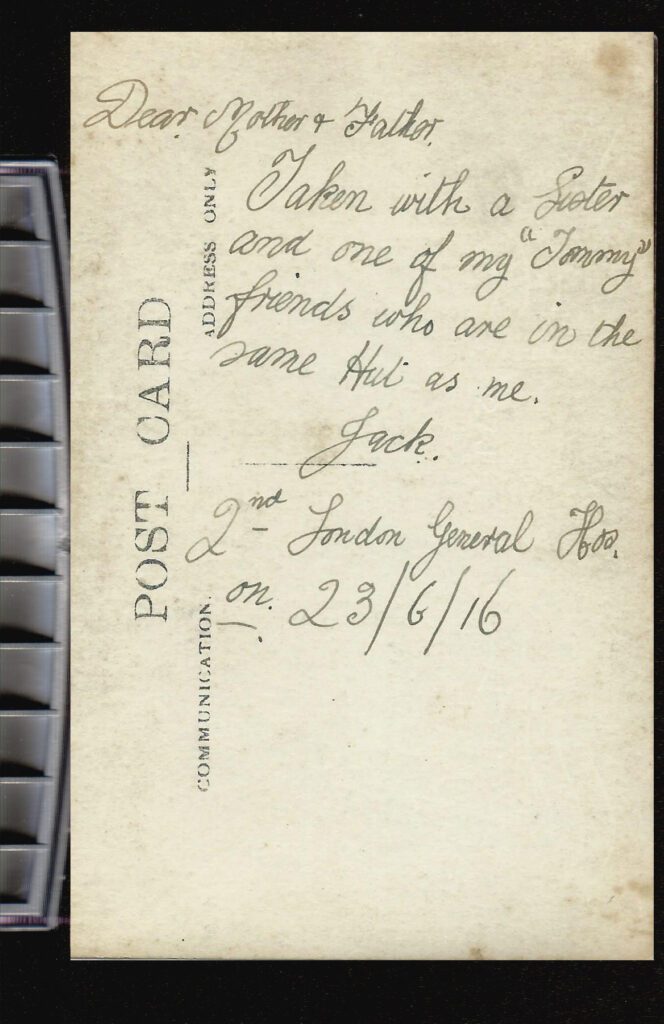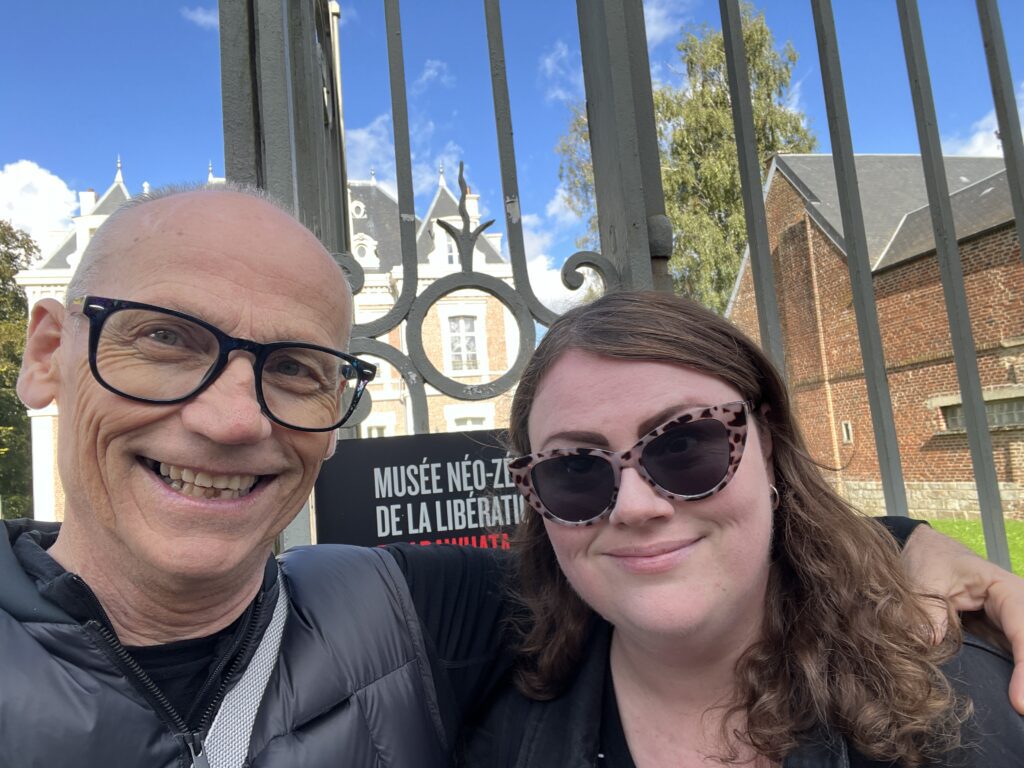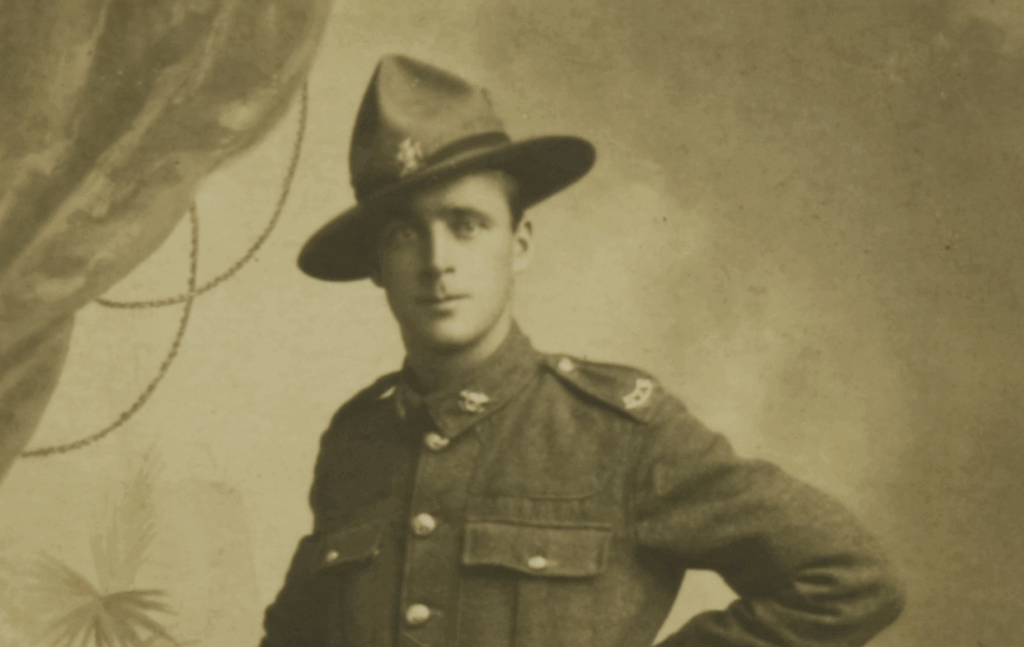Documenting family history leads to the Western Front and Le Quesnoy
When he was a kid, growing up in Palmerston North in the 1960s, Dennis Burns called his grandfather Pop. And now, four generations on, his granddaughter runs around at family gatherings calling him Pop.
“I’ve got this lovely little two and half-year-old girl who says, ‘Hi Pop’. She’s beautiful,” says Dennis from his home in Wellington.
Dennis was very close to his Pop. Samuel John Burns – known as Jack – was a talented cornet player, painter by trade, and soldier from Timaru who served on the Western Front during World War One.
“He was always one of my little boyhood heroes. My sisters would say the same. He was such a gentleman.”
He stops, takes a moment: “Sorry, I still get emotional about this because he was really important to me, even though we didn’t get to see much of him.”
Jack would come to visit us in the North Island from Timaru for a couple of weeks every year during the school holidays.
“There’s a photo of him sitting on the back lawn in one of those old striped deck chairs – that’s the memory I have. He’d sit in his chair, and we’d play draughts with him. It was cool.”

Discovering a rich family history
Dennis was 18 when his Pop died on March 27, 1976. On the day of his funeral, he was struck by the respect his Pop had from the members of the Timaru RSA who attended.

“He got a full military service, one of the last ones,” he remembers.
After the funeral the family started delving into his many papers and an array of memorabilia, like silver trays, batons, and medals found in a closet hidden between sheets of newspaper.
“That’s when I started to learn that he was a champion cornet player, he played in bands before and after the war, and he was a painter.”
A photo of his grandmother Florence sitting on a rock was especially inspiring. “I call it ‘My grandmother on a rock’ moment,” he smiles. “She died when I was 18 months old. It started piquing my interest to find out more, not just on Pop, but the whole family and the importance of documenting our family’s story.”
The arrival of his and late wife Diane’s son, Stuart, in 1987 inspired more family discovery. That year Dennis obtained Pop’s war records and when Stuart was 10 years old, a school assignment helped to uncover some significant war history on Diane’s side of the family.
“Stu came home from school and said, ‘One of our assignments is about what our grandparents did in the war?’ We went over to Diane’s parents’ house, Stu asked his granddad what he did in the war, and Tom spent the next two hours explaining about being in the Minesweepers during World War Two. Diane hadn’t heard about it, and luckily, I got it all on video.”
Sadly, Tom died two weeks later. “It’s these sorts of things that triggered me to document important information and pass it onto the next generation because these days they’re not really into keeping photos and that sort of stuff.”
In Pop’s Footsteps
Jack Burns – service number 6/3266 – enlisted on August 25, 1915, when he was 19. He joined C Company, 8th Reinforcements, 1st Battalion of the Canterbury Infantry Regiment.
The Canterbury Regiment embarked for Ismailia, Egypt, on November 13, 1915, and then transferred to Europe in April 1916. In May the battalion was called to the Western Front, entering the frontline at Armentières on the River Lys on May 13.
Inspired by the 100th anniversary of World War One in mid-2014, Dennis started hatching a plan for a commemoration tour he called In Pop’s Footsteps.
In 2016, Dennis, wife Diane, daughter Laura, son Stuart and daughter-in-law Erica travelled to Europe. On May 13, 2016, 100 years to the day, the family stood in Armentières where Pop faced his first action.
“It was a gorgeous day in this place where my grandfather had been. But at that time, less than 100m away, would have been the German frontline. It was very, very sobering.”

To help pinpoint the location at Armentières, and to gather more information about Pop’s time on the Western Front, Dennis contacted renowned historian and author John H. Gray who wrote From the Uttermost End of the Earth – The New Zealand Division on the Western front 1916-1918.
“John was incredible. I sent him my grandfather’s records and soon this wealth of information came through. He didn’t charge me anything – it was so generous. By piecing it all together I was able to work out as close as I could where Pop entered the front line.”
A loss of innocence
Rather than commemorate war, Dennis wanted the family’s time on the Western Front to reflect on the loss of innocence servicemen like their Pop faced when they went to war.
“Pop went from a party-going bandsman to not playing instruments, undergoing rigorous military training, where you are taught to obey and go over the top and walk into death.”
While Pop was one of the lucky ones who came home, within a fortnight of his time on the Western Front, he received shrapnel wounds to his arm, leg and head.
He was hospitalised in England and after being discharged in August 1916 was posted to the New Zealand Command Depot at Codford in Wiltshire. He remained in England for the next two years and for much of this time played cornet in the Regimental Command Band.

Pop returned to active service on the Western Front in September 1918. As part of his research, Gray identified how Pop was part of the Hundred Days Offensive during this time which involved a series of Allied attacks in 1918, including the Liberation of Le Quesnoy.
This part of Pop’s wartime journey would inspire Dennis and daughter Laura’s second visit to the Western Front. They had originally planned to visit Europe again in 2018, however sadly Diane was too sick to travel.
“Diane passed away last year after a long battle, but we’ve got our lovely little granddaughter,” says Dennis.
The Le Quesnoy connection
On September 29, 2024, Dennis and Laura visited Le Quesnoy where Pop’s wartime journey ended before he returned to New Zealand. In the northern French town, they visited the NZ Liberation Museum – Te Arawhata.
“It was an emotional day,” says Dennis, “made even more special having Laura there with me because Diane couldn’t be there. On that day, Diane, Stuart and Erica, and my granddaughter Thea were in our thoughts when we visited Le Quesnoy and the museum.

“Both Laura and I were really moved, firstly by the place, and secondly by the incredible welcome from the museum team. It made it feel like we were home. It truly is a part of New Zealand.
“The people visiting the museum are there because they want to find out more. It’s about connection. My overriding memory of visiting Le Quesnoy was relief. I finally let go of the emotion that had been building up inside me about Pop.”
Dennis laughs about how Pop was not on duty on the day of the Liberation: “My grandfather was probably having a whiskey or a beer or something. So, while the actual battle wasn’t part of his story, Le Quesnoy and the surrounding area definitely was.”
Pop made it home to Timaru in June 1919 after being away from family and friends for almost four years.
“He came back, was happily married, had my dad, and settled into a relatively normal existence as a painter and paper hanger. Despite the horrors of war, my Pop was a gentle man.”
